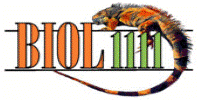|
Alternative Hypothesis
A second hypothesis to be considered and tested simultaneously with the first. |
|
Analysis
To determine whether the results of your experiment are meaningful, one performs some sort of analysis that lets one see trends or patterns in the data. |
|
Assumptions
In every experiment, assumptions are made which are very basic and broad, e.g. Insects cannot see infrared. |
|
Control Group
The individuals or subjects in the control group(s) are subjected to exactly the same treatment and conditions as those in the experimental group(s)EXCEPT for the application of the experimental manipulation. |
|
Control Variable
A control variable is any of the factors that you choose to hold constant for all groups to insure that it is not that variable producing the effect, but instead it is the experimental variable that has the effect. |
|
Controlled Experiment
In a controlled experiment, the experimenter determines the levels or amount of the variable of interest to apply. At least two groups are involved and one group is not 'exposed' to the factor of interest. |
|
Dependent Variable
The dependent variable is the variable in which you are measuring changes in response to the independent or experimental variable. |
|
Double Blind Experiment
A Double Blind Experiment is an experiment where neither the subject nor the experimenter knows of which group (control or experimental) the subject is a part. |
|
Experimental Group
The individuals in the experimental group are treated to some non-zero level of the factor of interest. |
|
Experimental Variable
The experimental variable is the item or factor you wish to test to see if it affects the subjects in the way you predict based on your hypothesis. |
|
Hypothesis
To answer some general or specific question, one develops a hypothesis, a tentative causal explanation, based on the observations that have been made. |
|
Independent/Manipulated Variable
An independent variable is an experimental variable or variable of interest that the experimenter typically is able to manipulate, i.e. set the values, and serves as the predictor for the result. |
|
Interpret/Draw Conclusions
One interprets or draws conclusions based on the data collected and the works of others. Interpretation leads to a statement as to whether the data support the hypothesis or not. Additionally, one speculates and suggests new hypotheses. |
|
Observation
One interprets or draws conclusions based on the data collected and the works of others. Interpretation leads to a statement as to whether the data support the hypothesis or not. Additionally, one speculates and suggests new hypotheses. |
|
Observational Experiment
The experimenter cannot set the exact values of the experimental variable or select the subjects for each group because it is ethically unacceptable, physically impossible, or includes too many variables. (Test by correlation; conclusions less strong) |
|
Placebo
Substance substituted for experimental treatment (e.g. a sugar pill instead of a drug) to minimize differences between experimental and control groups; prevents bias of subjects and/or observers knowing whether they are receiving the experimental treatment. |
|
Predictions
A forecast about what can or will occur based on the hypothesis proposed and the conditions of an experiment. Comparing the actual occurrences to the predictions made by alternative hypotheses results in support for certain hypotheses and not others. |
|
Question
A forecast about what can or will occur based on the hypothesis proposed and the conditions of an experiment. Comparing the actual occurrences to the predictions made by alternative hypotheses results in support for certain hypotheses and not others. |
|
Sample Size
Number of individuals used in an experiment. One performs every experiment with more than one subject to control for individual variation. The larger the sample size, the more likely that one will see the true impact of the experimental variable. |
|
Sham Operation
Number of individuals used in an experiment. One performs every experiment with more than one subject to control for individual variation. The larger the sample size, the more likely that one will see the true impact of the experimental variable. |
|
Statistical Tests
A mathematical analysis based on certain mathematical assumptions about the data that determines whether it is likely or not that the results of an experiment are chance occurrences and not the result of the application of the experimental variable. |
|
Subject
A subject is the individual or unit for the experiment. It can be an animal, a plant, a plot of a crop, a petri dish of bacteria, a sample of tissue from one person's liver, a point along a stream bank, etc. |
|
Supported/Not Supported
When results of an experiment are consistent with those predicted by the hypothesis, they are interpreted as supporting it; if not, they can be said to fail to support (perhaps refute) the hypothesis. No amount of data can ever prove a hypothesis. |
|
Theory
Hypothesis or set of hypotheses for which sufficient consensus was reached based on many different types and repetitions of experiments; tested, modified, and discarded but never proven; best explanation or model of the natural world at any point in time. |
|
What is Science?
Study of the natural or observable world; a way to learn the causes of phenomena by testing predictions based on possible explanations of how the phenomena arise; a way to gain knowledge by a dynamic process of gathering and testing information. |

